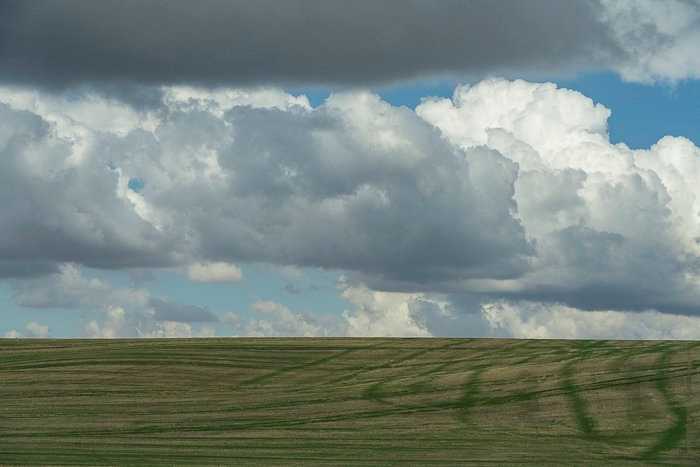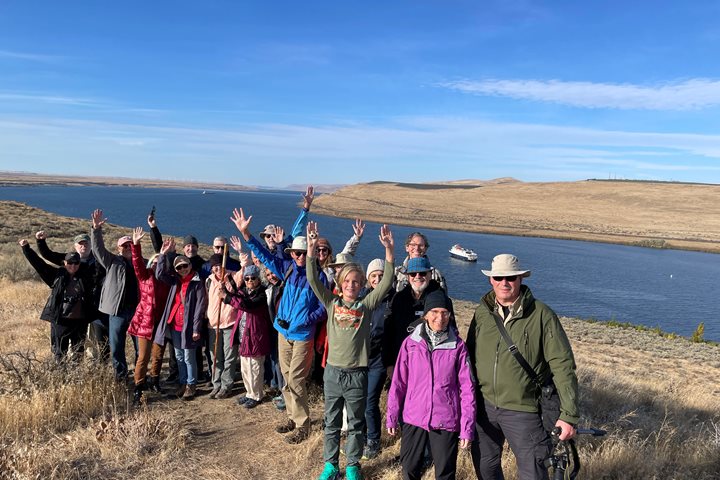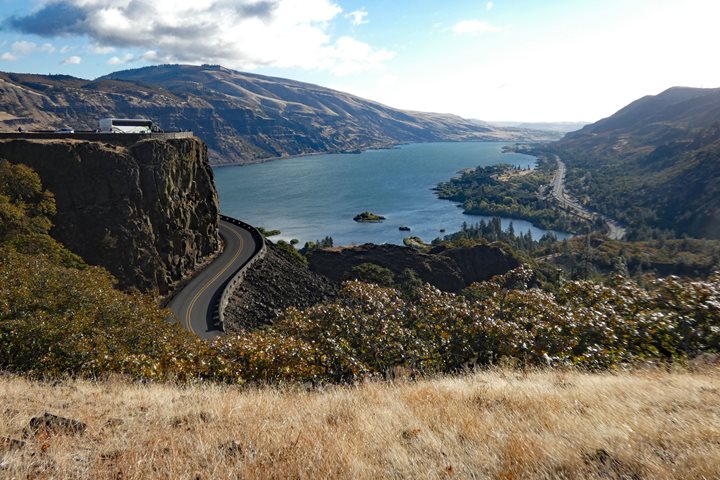Today began with an early departure from the ship to board buses that would take us eastward through the gorge from Vancouver, Washington, past the Bonneville Dam Lock. Fog and clouds hung overhead as we traveled along Highway 84, through the Columbia River Gorge with its steep walls of basalt and lava rising steeply above us. Across the river, we saw evidence of ancient lava flows, the climate drying as we drove through the Cascades to the eastern side of Oregon.
The sun broke through and pushed back the fog, yielding a beautiful day and landscape of layers of basalt and lava benches. Each of the naturalists shared fascinating and fun facts about the geology, history, American Indian culture, agriculture and local stories along the way. We learned about the Appaloosa horses, fire recovery, Walla Walla sweet onions, the ongoing controversy about the dams, geology, and many tidbits of local information that brought the region to life as we drove along. Our wellness specialist taught people how to give themselves massages and how to massage others and stretch while seated, and our photography instructor taught us various techniques with our iphones and shared tips for making better pictures.
We traveled through the Horse Heaven Hills with their basalt anticlines and stopped at Walla Walla for an amazing buffet lunch at The Great Steak Company before driving on to the historic site of the Whitman Massacre. Marcus Whitman, a missionary, had established a mission and was trying to convert the Cayuse Indians. The natives in turn became sick with diseases brought by settlers and then believed that the missionary was trying to poison or sicken them.
On November 30, 1847, the Cayuse struck back, attacking the mission and killing Marcus, his wife Narcissa and their young daughter, along with ten others. This marked a yearlong war with the Cayuse that ultimately ended in the defeat of the tribes. The site stands today as a reminder of that fateful event in history. We then boarded our busses and continued along into the Palouse Prairie, an agricultural region of rolling hills of wheat, legumes, hay and barley.
The hills are actually ancient ripples from the massive mudflows created in the Missoula Flood and other successive floods that occurred millions of years ago. Huge amounts of sediment were dumped here when the ancient floodwaters could not all fit through the Wallula Gap to the west, and this caused a huge backwash lake that filled the region east of the gap with deep layers of mud and clay sediment. Today, the fertile supports a large amount of wheat and barley being grown here. After winding through valleys and up and over these rounded hills, we arrived in Lewiston at our hotels, and after a brief refresher we met for our hearty and delicious dinner in Lewiston at the Mystic Café.







